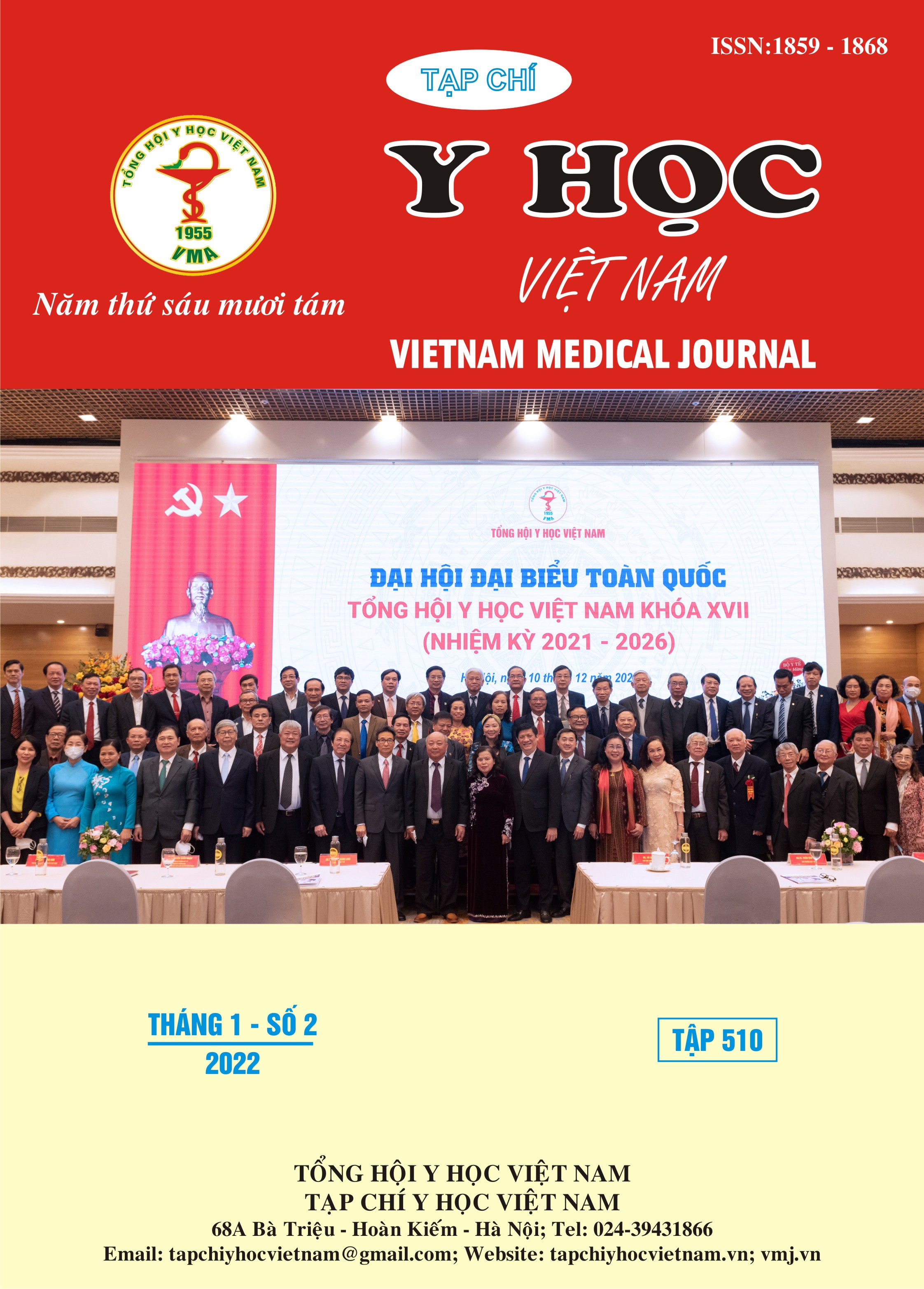ENDOSCOPIC ANTOMICAL LANDMARK OF THE PTERYGOPALATINE FOSSA IN VIETNAMESE ADULT CADAVERS
Main Article Content
Abstract
Background: The pterygopalatine fossa is a deep area and has a complex vascular structure, which should be understood when treating tumors in the nasopharynx or ligation of the blood vessels. Understand the endoscopic anatomical features of the pterygopalatine fossa to access this area safely. Objectives: To study the characteristics of anatomical landmarks in the pterygopalatine fossa through endoscopic dissection of fresh cadavers. Methods: Cross-sectional descriptive study. From September 2020 to June 2021, we examined 10 fresh cadaveric samples at The Anatomy Department – University of Medicine and Pharmacy at HCM city and recorded the characteristics of anatomical landmarks. Mean distance between the anterior nasal spine and the ethmoidal crest was 59,38 ± 4,47 mm. Mean distance between the anterior nasal spine and the posterior wall of maxillary sinus was 64,4 ± 6,89 mm. . Mean distance between the anterior nasal spine and the internal maxillary artery was 62,68 ± 5,73mm. The diameter of the internal maxillary artery is 3.3 ± 0.72 mm. The diameter of the sphenopalatine artery is 2,5 ± 0,61 mm. The palatine sphenoid artery after exiting the palatine foramen into the nasal cavity divides into 2 main branches in 20% of cases, 80% has only 1 main branch. Results: The study provides endoscopic characteristics of the palatine fossa vasculature. From there, it can be applied in selective arterial embolization in surgery for tumors of the nasal cavity, sinuses, the pterygopalatine fossa and other areas of the skull base or as an alternative to inserting posterior nasal packing to control nose bleeding.
Article Details
Keywords
The pterygopalatine fossa, the ethmoidal crest, the internal maxillary artery, The palatine sphenoid artery
References
2. Hosseini SM, Borghei P. Rhinocerebral mucormycosis: pathways of spread (2005), Eur Arch Otorhinolaryngol, 262: pp. 932–938.
3. Nouraei SA, Maani T, Hajioff D, et al. Outcome of endoscopic sphenopalatine artery occlusion for intractable epistaxis: A 10-year experience (2007), Laryngoscope, 117, pp. 1452–1456.
4. Solares CA, Ong YK, Snyderman CH (2010), Transnasal endoscopic skull base surgery: what are the limits?, Curr Opin Otolaryngol Head Neck Surg, 18(1), pp. 1-7.
5. Tajudeen BA, Kennedy DW (2017), Thirty years of endoscopic sinus surgery: What have we learned?, World J Otorhinolaryngol Head Neck Surg, 3(2), pp. 115–121.
6. Lê Thị Mộng Thu (2018), "Đánh giá hiệu quả đốt động mạch bướm khẩu cái qua nội soi điều trị chảy máu mũi tại Bệnh viện Chợ Rẫy", Tạp chí Y hoc TPHCM. tập 22, pp. 88-91
7. Bùi Thái Vi (2001), "Nghiên cứu cấu trúc của mào sàng và lỗ bướm khẩu cái để định vị động mạch bướm khẩu cái, ứng dụng trong phẫu thuật nội soi thắt mạch bướm khẩu cái", Luận án tiến sĩ Y học. Đại Học Y Dược TPHCM.
8. W. E. Bolger (2005), "Endoscopic transpterygoid approach to the lateral sphenoid recess: surgical approach and clinical experience", Otolaryngol Head Neck Surg. 133(1), pp. 20-6.
9. F. G. Padua and Voegels, R. L. (2008), "Severe posterior epistaxis-endoscopic surgical anatomy", Laryngoscope. 118(1), pp. 156-61.L. Rudmik and Smith, T. L. (2012), "Management of intractable spontaneous epistaxis", Am J Rhinol Allergy. 26(1), pp. 55-60.
10. L. Rudmik and Smith, T. L. (2012), "Management of intractable spontaneous epistaxis", Am J Rhinol Allergy. 26(1), pp. 55-60.
11. Võ Công Minh (2020), "Nghiên cứu các mốc giải phẫu hố chân bướm khẩu cái qua nội soi góp phần ứng dụng trong phẫu thuật Tai Mũi Họng", Luận án tiến sĩ Y học. Đại học Y dược TP.HCM.
12. J. K. Kim, Cho, J. H., Lee, Y. J., et al. (2010), "Anatomical variability of the maxillary artery: findings from 100 Asian cadaveric dissections", Arch Otolaryngol Head Neck Surg. 136(8), pp. 813-8.


